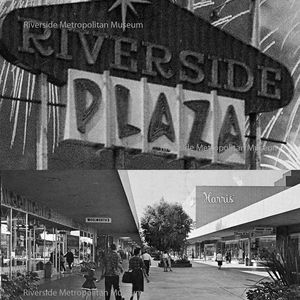The Magnolia Center

Brockton.central.magnolia
Magnolia Center has been a part of the City of Riverside since its foundation. This neighborhood can boast that it was the home of State Senator Henry L. Streeter who sponsored legislation that led to the creation of Riverside County in 1893. His house still stands at 5211 Central Avenue.
Its history and age are reflected in the design of its residential neighborhoods. Newer subdivisions have given the neighborhood an interesting mix of modern and traditional street layouts. This neighborhood boomed in the decade after World War Two and this left little room for new development after the 1970’s. Commercial uses are centered upon Magnolia Avenue and Central, and the meeting of these two great streets creates one of Riverside’s most unique intersections. The remaining area of this community is devoted to residential neighborhoods, which tend to be laid out in a more traditional grid pattern.
Why is the area around the intersection of Magnolia, Central, and Brockton Avenues in Riverside called “Magnolia Center?” One might think it has to do with a shopping center, but that is not the case.
According to a column by Steve Lech published December 7, 2012, in the Press Enterprise, when Magnolia Avenue was extended north from Arlington to 14th Street downtown, it crossed Central Avenue very close to Central’s intersection with Brockton Avenue. This created a “Five Points” location that quickly began to sprout houses and businesses.
One nearby business was the realty office of William Lawler on Palm Avenue. In the early 1920s, Lawler advertised heavily in the local papers, but on Nov. 22, 1923, he advertised several properties for sale right around his office. In the ad, he claimed the properties were “within 2 blocks of my office . . . and my office is the exact center of Riverside.”

the new magnolia district
This claim apparently sent several people scrambling for their maps of the city. One such person was a competitor of Lawler’s, Russell Burlingame. On Dec. 31 of that year, Burlingame put in a small ad for his realty business, which he claimed was “at the intersection of Brockton, Central, and Magnolia — the exact center of Riverside.”
The assertion that the area was Riverside’s center seems to have stuck, for over the next few years, as Burlingame and others tried to create a new business district around the intersection, several realty ads alluded to the assumption that the area would be the “center of Riverside in 1930.”
All of this was taking place in what was then being called the “New Magnolia District” after “New” Magnolia Avenue, the name people gave to the section of Magnolia between Arlington and 14th Street. By 1927, a new, catchier term began to be used for the area, that of Magnolia Center.

Pachappa Elementary (above)
The first reference to the term seems to come from the Magnolia Center Business Men’s Association, which was created either in 1926 or 1927 from many of the businessmen who were buying property and setting up offices around the intersection. These men and others hoped to create a business district separate from downtown.
They wasted no time in advertising their businesses together under the banner of the Magnolia Center Business Men’s Association, and included such businesses as a realty office, garage, gasoline station, tailor, grocer, confectioner, sundry shop, homebuilder, and radio store. With the greater Wood Street area quickly developing with new homes, Magnolia Center was becoming a secondary place to shop for Riverside’s burgeoning population.
Once the term Magnolia Center had been coined, Burlingame and others used it extensively in their advertising. Throughout 1927 and 1928, hundreds of realty ads touted the new term. By 1928, the term had caught on in the local vernacular. From that point on, the term Magnolia Center became synonymous with the region of Riverside centered around the intersection of Magnolia, Brockton, and Central Avenues. The photo above (Top Center) was taken around 1930 or so. Notice the 76 station where there is still one today! And the Gilmore gas station is now Kuma Tires.


Washington Navel Orange Tree
The Parent Washington Navel Orange Tree is a tree grown by Eliza Tibbets in Riverside, California, in 1873. The Riverside County tree was designated a California Historic Landmark on June 1, 1932, at the corner of Magnolia Avenue and Arlington Street, Riverside.

The Original Plaza
Originally opened as an outdoor mall in three stages during 1956-57, the Riverside Plaza was the city's first large-scale shopping center. After 30 years of shopping under the sun (and occasional rainstorm), the Plaza adapted to long-evolving changes in shopping trends by adding a permanent roof in 1984.
Copyright © 2021 Magnolia Area Neighborhood Alliance - All Rights Reserved.
